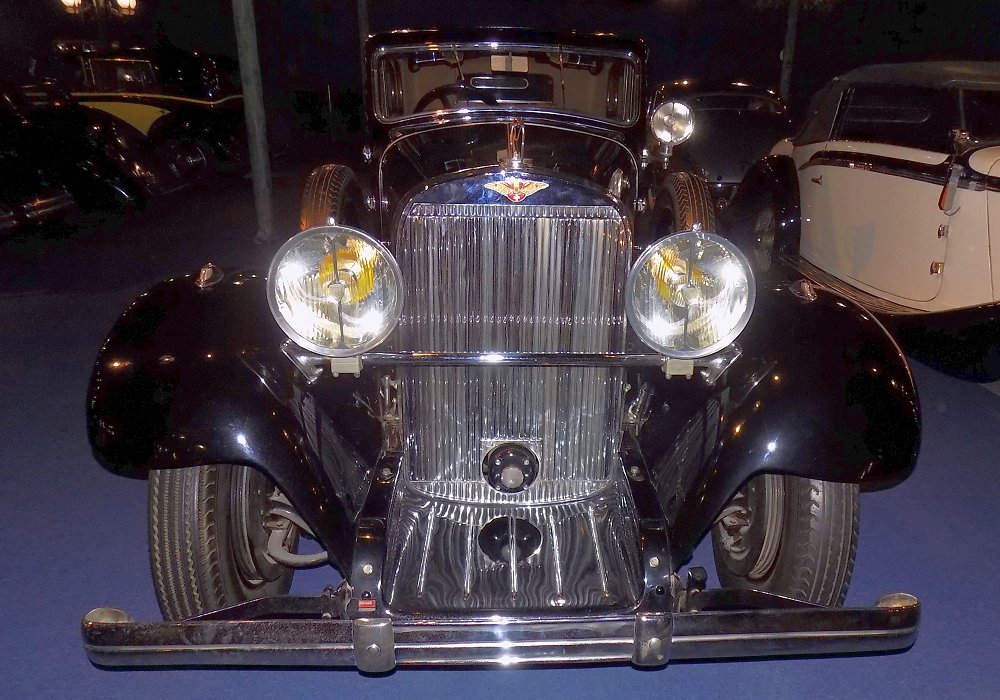Description
The Hispano-Suiza J12 Berline was one of the most stately and refined luxury automobiles of the 1930s, representing the height of Hispano-Suiza’s engineering genius and commitment to bespoke craftsmanship. Introduced in 1931, the J12 was the crown jewel of the marque’s prewar lineup—a car built without compromise, aimed at the world’s most discerning and wealthy clientele. The Berline, or formal sedan, embodied the spirit of dignified grandeur and technical mastery that made Hispano-Suiza one of the most prestigious names in automotive history.
The foundation of the J12 Berline was its remarkable chassis and powertrain, designed under the supervision of the company’s legendary chief engineer, Marc Birkigt. The car was powered by a magnificent V12 engine, constructed entirely from aluminum—a feat of engineering excellence for its time. The initial version displaced 9.4 litres, while later examples grew to 11.3 litres. Featuring a single overhead camshaft per cylinder bank and hemispherical combustion chambers, the J12’s V12 was machined from solid billets of aluminum, demonstrating a level of precision and craftsmanship that bordered on the obsessive. It developed roughly 220 horsepower, allowing the car to cruise effortlessly at 160 km/h (100 mph) in near silence.
The J12’s chassis was equally advanced. It featured a robust steel frame, servo-assisted four-wheel brakes—a Hispano-Suiza innovation—and a beautifully balanced suspension system designed for both comfort and stability. The mechanical refinement of the J12 set new standards in the luxury segment, combining smoothness, reliability, and performance in a way that few contemporaries could match. The result was a car that moved with the grace of a limousine but responded with the confidence of a well-engineered touring machine.
The Berline body style—often built by France’s finest coachbuilders such as Kellner, Vanvooren, or Henri Chapron—was designed for comfort, privacy, and formality. It was characterized by an enclosed passenger compartment, often separated from the driver’s seat by a partition, reflecting the tastes of an era when many wealthy owners were chauffeured. The design emphasized elegance and dignity: a tall, upright grille at the front, long flowing fenders, and a formal roofline that conveyed authority and refinement. The restrained use of chrome and the impeccable proportions gave the car a timeless, understated beauty.
Inside, the Berline was a sanctuary of luxury. The passenger compartment featured the finest materials available—deep wool carpeting, supple leather or silk upholstery, and highly polished walnut or mahogany trim. Many examples included folding tables, footrests, cigar lighters, and even crystal vases. Some were equipped with intercoms or speaking tubes for communication between the passengers and the chauffeur. Every element was hand-fitted and tailored to the owner’s specifications, making each car a one-of-a-kind creation.
Driving the Hispano-Suiza J12 was a revelation of smoothness and serenity. The V12 engine delivered immense torque at low speeds, enabling near-silent acceleration. The steering was precise for such a large car, and the servo-assisted brakes provided confident stopping power with minimal effort. The entire experience was one of effortless control—an engineering triumph that blended grace with power. The car’s refinement led many contemporary journalists to describe it as the most perfectly built automobile in the world.
The J12 Berline quickly became a favorite among royalty, diplomats, and industrial magnates. Owners included the King of Spain, the Shah of Persia, and heads of European aristocracy. Its cost was astronomical—higher than a Rolls-Royce Phantom II—and its exclusivity ensured that each example became a personal statement of wealth and status.
Production of the Hispano-Suiza J12 continued until 1938, with only around 120 examples completed. Each chassis was custom-bodied, and no two were exactly alike. The Berline models remain among the most dignified and beautifully proportioned examples, reflecting the company’s unmatched standards of engineering and artistry.
Today, the Hispano-Suiza J12 Berline is considered one of the crowning achievements of the classic era—a car that combined the mechanical brilliance of Swiss engineering, the luxury of French craftsmanship, and the grandeur of early 20th-century aristocratic motoring. It stands as a lasting symbol of an age when automobiles were not merely machines, but expressions of elegance, power, and perfection.
